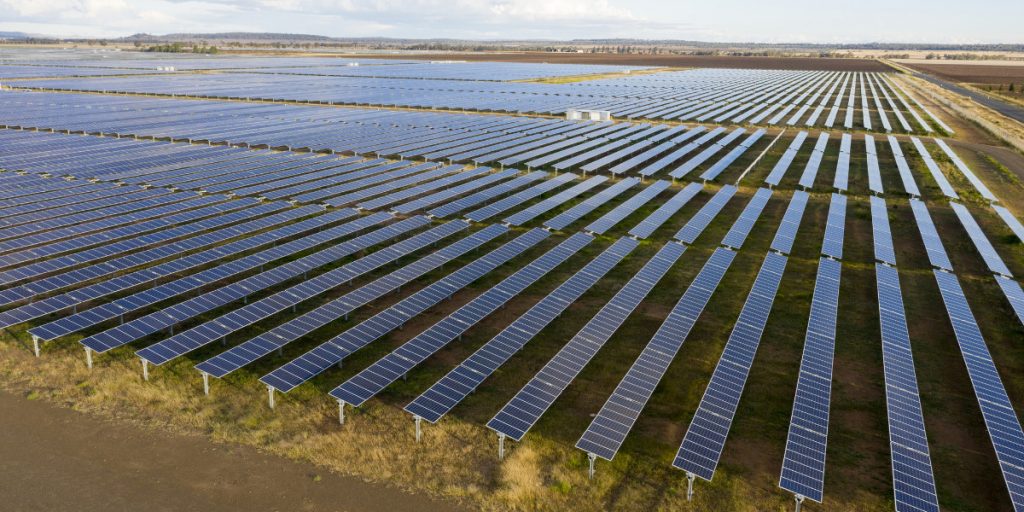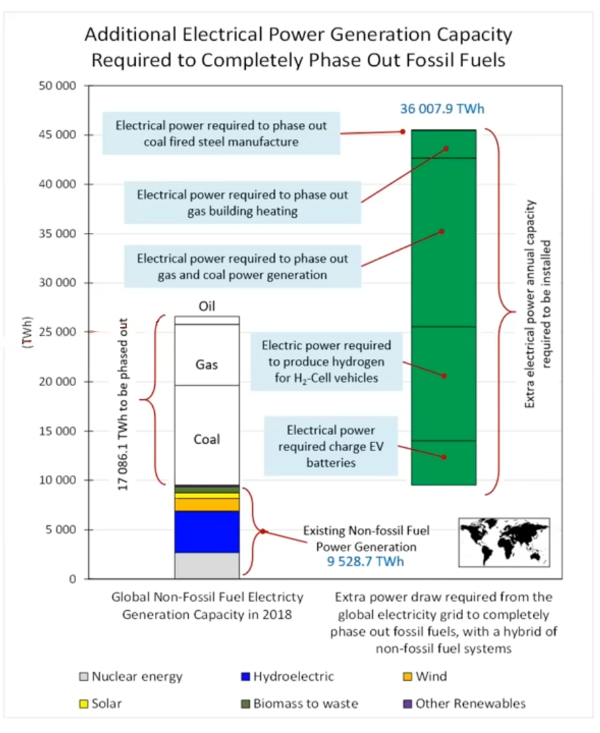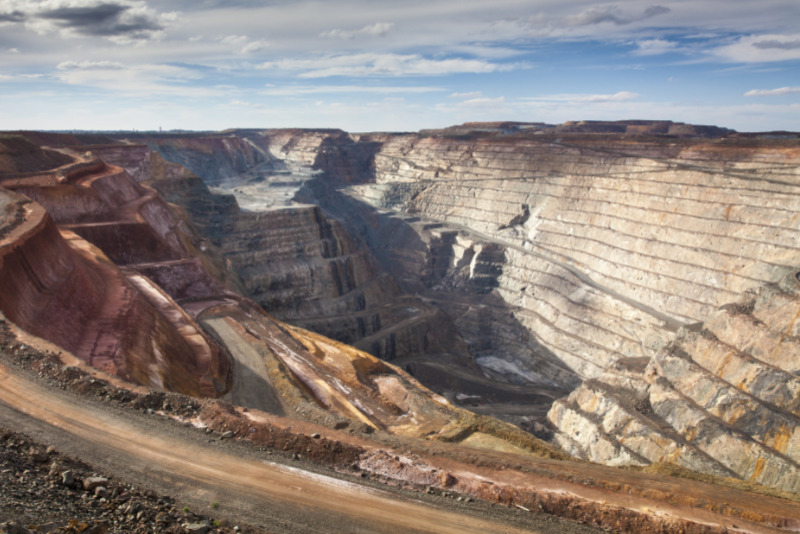The Transition to Renewables is Not Going to Happen

As accelerating climate change has alerted the public that we urgently need to reduce our reliance on fossil fuels, politicians and the media have peddled a ‘transition to renewables’ fiction with no basis in reality. This idea that we are going to have a like-for-like replacement – electric cars and truck replacing their petrol equivalents and wind and solar replacing coal and gas fired power generation has now been entrenched in the public’s mind. It is a convenient fiction because it implies that nothing much is going to change. We will still have economic growth and conspicuous consumption, but without the greenhouse gas emissions.
Because electric cars are now being mass-produced and wind and solar have become familiar as part of the power mix, it sounds like we are on to a winner. Except we aren’t and we can never be.
We are constantly told that lobbying by fossil fuel companies is the major impediment to a transition to renewables. That may well be the case in the very short term, but its irrelevant in terms of the feasibility of the overall project. Many sceptics of the renewable energy cheer squad have been talking about the fact that there isn’t enough lithium to build all the batteries we would need to smooth out the intermittency of wind and solar generation. They also point out that the energy return on energy invested of renewables is much lower than coal, gas and oil, so the resulting economy could not possibly maintain the same level of complexity. These voices have been largely dismissed.
But now Simon Michaux, an Australian working in Finland, has presented the first comprehensive analysis of the total amount of metals required to create a full, first generation of the ‘renewables economy’, assuming we are going to keep all the cars, trucks, trains, ships and so on.
Prof Michaux previously published a comprehensive report into how we could go abut replacing the current fossil fuel based economic system with a mix of electric cars/vans, hydrogen powered trucks and ships and electricity produced from a mix of solar, wind, hydro and nuclear. The scale of the task is massive, as we would need:

- 280 million tonnes of lithium batteries for 700 million cars, 600 million vans and 60 million motorbikes
- 200 million tonnes of hydrogen per year for heavy trucks, trains and ships
- 16,000 TWh of electricity to charge the EV batteries and produce the hydrogen
- Another 20,000 TWh of electricity to replace direct fossil fuel use by industry (steel, chemicals, fertilizer etc.)
- This additional electricity demand translates into 586,000 new wind/solar power stations of average size
- To have 4 weeks buffer storage in the grid to cover wind/solar intermittency we would need 15 Million 100MW grid batteries
What is new in his latest work is his estimate of the metals that would be required to build the batteries and wind/solar generation for the renewables transition. He makes clear that his estimate is for the first generation only, given that batteries and wind/solar have relatively short lifetimes, ranging from 8-25 years. Based on current technologies for batteries, solar PV and wind turbines, he calculates that we would need enormous quantities of copper, nickel, lithium, cobalt and vanadium. He acknowledges that there have been incremental improvements in battery technology, solar PV and wind turbines, but these improvements do not significantly change the total amount of metals required.
Using 2019 production rates of these metals from mining, he shows that it would take:

- 190 years to mine the copper,
- 400 years to mine the nickel,
- 1,700 years to mine the cobalt, and
- 7,100 and 9,900 years for the vanadium and lithium respectively
And that’s just for the first generation!
The counterargument would be that we could ramp up the rate of production, but that would require even more energy and water than we are already using. Open pit mining is completely dependent on diesel for the massive dump trucks and excavators that make extraction of low-grade ores viable.
It is an irrelevant argument, though. The global reserves to produce the quantities required simply do not exist. According to Prof Michaux we have access to about 20% of the copper needed, 10% of the nickel and less than 4% of the lithium and cobalt required. Which means there will never be a ‘transition to renewables’ like in the simplistic story we have been told.
At this point the techno-utopists will surely mention deep sea and asteroid mining, without considering the environmental impact to the ocean floor or making any attempt to calculate the energy required compared to open pit mining.
The future will look very different from what we have now. We will not have 1.4 billion cars, vans and trucks. We will not have 30,000 commercial airplanes. We will not produce 367million tons of plastic every year.
What it will look like will most likely depend on how we use the oil we still have available at extraction costs we can afford. If we continue to use it mainly for transport and for making throw-away and luxury stuff nobody needs, we will be completely unprepared for the decline in oil production that is probably already underway.
As there is no mainstream acceptance of the imminent and permanent decline in oil production, we will continue to put our heads in the sand until it is too late.
Our work is entirely reader-supported, so if you enjoyed this article please consider sharing it around, following us on Twitter or LinkedIn, or throwing some money into our tip jar on Paypal. Everything we publish is open access. Finding the time to do the research and writing is helped by the goodwill of people who are also looking for real answers to what is happening. The best way to make sure you don’t miss the articles we publish is to subscribe to the mailing list at our website.

Peter Lanius is a physicist by training who has worked in IT, Telecoms and as an executive coach across many industries. He believes in collapsing early to avoid the rush and lives on a 20acre property in regional Australia.





